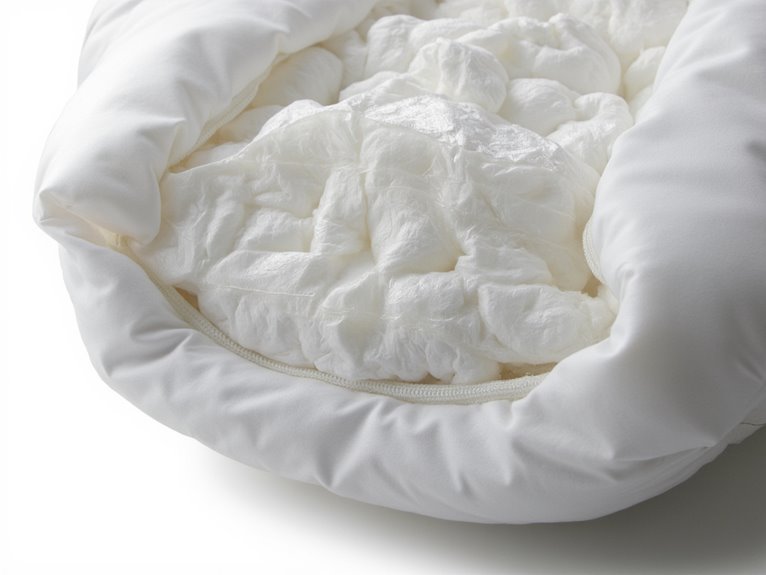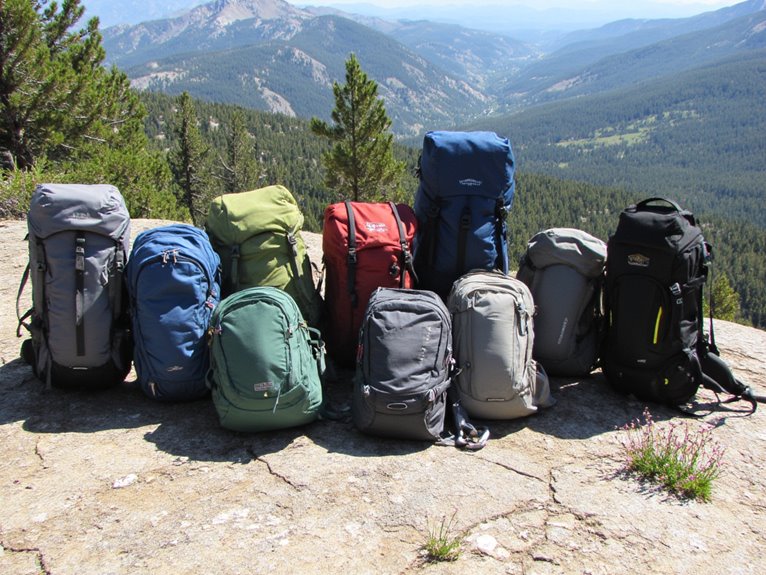How to Pack for Mt Whitney?
Packing for Mt. Whitney requires careful thought of the mountain's unpredictable weather, steep terrain, and remote location. Essential climbing gear includes crampons, ice axes, ropes, and a first aid kit. Clothing should include breathable base layers, insulating mid-layers, and water-resistant outerwear. Navigation tools, such as a map, compass, and GPS, are essential, along with a first aid kit and emergency response plan. Hydration and nutrition essentials like water, electrolyte-rich foods, and energy-rich snacks are also indispensable. Shelter and sleeping gear, including a waterproof tent and warm sleeping bag, are necessary for a comfortable and safe climb. By prioritizing these critical items, you'll be well-prepared for the challenges of Mt. Whitney – but there's more to take into account when preparing for this expedition.
We are supported by our audience. When you purchase through links on our site, we may earn an affiliate commission, at no extra cost for you. Learn more. Last update on 7th January 2026 / Images from Amazon Product Advertising API.
Essential Climbing Gear to Bring
Crampons, ice axes, and ropes are just a few of the essential climbing gear items that must be brought along on a Mt. Whitney expedition to guarantee a safe and successful ascent, facilitating a trouble-free climb.
These tools enable climbers to navigate steep snow and ice slopes with confidence.
Additionally, a climbing helmet, harness, and carabiners are vital for securing oneself to the rope and protecting against falling rocks or ice.
A belay device and locking carabiner provide a secure anchor point.
Furthermore, a first aid kit and emergency shelter should be packed in case of unexpected events.
Clothing for Unpredictable Weather
While tackling Mt. Whitney's steep snow and ice slopes with confidence, climbers must also be prepared to face the mountain's notorious unpredictable weather conditions, which demands a thoughtful and strategic approach to packing the right clothing.
To prepare for the mountain's mood swings, bring:
- Breathable, moisture-wicking base layers to regulate body temperature and prevent chafing.
- Insulating mid-layers, such as fleece or down jackets, to trap warmth in cold conditions.
- Water-resistant and windproof outerwear, like a shell jacket and pants, to shield you from wind, rain, and snow.
- Quick-drying, warm hats and gloves to prevent heat loss and keep your extremities warm.
When venturing into the wilderness, reliable navigation and safety tools are vital for a successful and safe ascent of Mt. Whitney.
A thorough navigation system should include a combination of traditional map and compass essentials, as well as modern GPS device options.
Map and Compass Essentials
Every successful ascent of Mt. Whitney relies heavily on the ability to navigate through the wilderness, making a map and compass an indispensable duo in your backpack. These traditional navigation tools are essential for finding your way, especially in areas with limited visibility or when electronic devices fail.
When packing your map and compass, consider the following essentials:
- Topographic map: A detailed, waterproof map of the Mt. Whitney trail and surrounding areas.
- Compass with adjustable declination: Verify your compass is specifically designed for use in the Sierra Nevada range.
- Map case or waterproof bag: Protect your map from the elements with a waterproof case or bag.
- Navigation skills: Take the time to learn basic navigation techniques, such as triangulation and backbearing, to confirm you can use your map and compass effectively.
Note:
GPS Device Options
In addition to traditional map and compass navigation, a GPS device can provide an added layer of safety and accuracy on the Mt. Whitney trail, offering real-time location data and route tracking capabilities.
When choosing a GPS device, consider a handheld unit with a durable design, long battery life, and a high-sensitivity receiver for accurate readings.
Look for devices with preloaded topographic maps, route planning features, and the ability to mark waypoints.
Some popular GPS device options for backpacking include the Garmin eTrex, Magellan Explorist, and DeLorme GPS.
Be sure to bring extra batteries and a protective case to safeguard your device remains functional throughout your trip.
First Aid and Emergency Kit
As you prepare for your Mt. Whitney expedition, it is essential to include a well-stocked First Aid and Emergency Kit in your backpack.
This essential kit should contain wound care essentials, such as bandages, antiseptic wipes, and pain relievers, to treat minor injuries that may occur during the climb.
Additionally, it is imperative to develop an emergency response plan, including knowing the emergency contact numbers and having a plan for evacuation in case of a serious accident.
Wound Care Essentials
Your Mt. Whitney first aid kit should include a thorough wound care component, featuring items that can effectively treat and manage cuts, lacerations, and abrasions.
When venturing into the wilderness, it's vital to be prepared for unexpected injuries. A well-stocked wound care kit can help prevent infections and promote healing.
- Gauze pads: For applying pressure and dressing wounds
- Antiseptic wipes: To clean and disinfect wounds
- Antibiotic ointment: To prevent infection and promote healing
- Medical tape: To secure dressings and bandages
Remember to check the expiration dates of your supplies and replace them as needed.
A well-maintained wound care kit can be a lifesaver on the mountain.
Emergency Response Plans
A thorough emergency response plan is essential for Mt. Whitney climbers, as it enables prompt and effective action in the event of an emergency or accident.
This plan should include a first aid kit with basic supplies, such as bandages, antiseptic wipes, pain relievers, and any personal medications.
It's also essential to have a means of communication, such as a satellite phone or a two-way radio, to call for help in case of an emergency.
Additionally, climbers should know basic first aid techniques, such as CPR and wound cleaning and dressing.
A plan for emergency evacuation, including knowledge of the nearest medical facility and emergency contact information, is also imperative.
Hydration and Nutrition Essentials
Sixty-four ounces of water is the minimum amount each climber should carry on a Mt. Whitney summit attempt, considering the high altitude and physical demands of the hike. Dehydration can lead to serious health issues, so it's vital to stay hydrated throughout the climb.
In addition to water, it's essential to pack snacks that provide energy and electrolytes.
Water purification tablets or filter (in case you need to refill your water supply)
Energy-rich snacks (e.g., trail mix, energy bars, dried fruits)
Electrolyte-rich foods (e.g., bananas, avocados, energy chews)
Hydration packs or hydration bladders for easy access to water
Shelter and Sleeping Gear Options
Considering the unpredictable mountain weather and the need for a good night's rest, a reliable shelter and sleeping gear are essential components of your Mt. Whitney summit packing list.
A sturdy, waterproof backpacking tent with a freestanding design and a rain fly is a must.
Look for a tent with a floor area of at least 20 square feet to provide comfort and space for gear.
Sleeping gear should include a insulated sleeping bag rated to 20°F (-7°C) or colder, a sleeping pad with an R-value of at least 3.5, and a warm beanie and gloves for chilly nights.
Don't forget a sleeping bag liner for added warmth and a ground cloth for extra protection from the elements.
Miscellaneous but Crucial Items
Beyond the essentials, a handful of miscellaneous items can make all the difference in ensuring a safe and successful Mt. Whitney summit bid. These often-overlooked items may not be as glamorous as a new tent or sleeping bag, but they are crucial in their own right.
Hand and toe warmers for cold mornings and windy summits.
Biodegradable soap for washing up at the campsite.
Repair kit with duct tape, safety pins, and a multi-tool.
Extra cash for parking, permits, and unexpected expenses.


